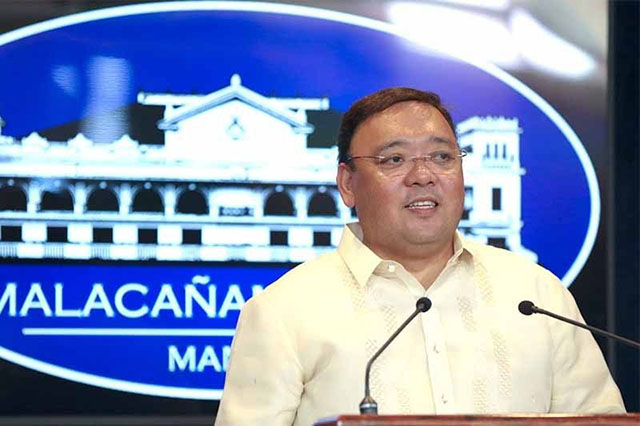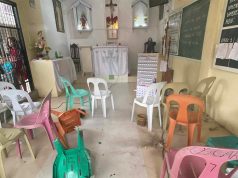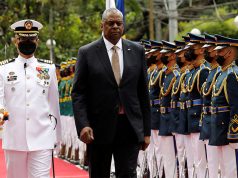
The importance of effective communication was highlighted when the Palace refuted the claim of Health Secretary Francisco Duque III that the country was already in its “second wave” of the novel coronavirus pandemic.
Presidential spokesperson Harry Roque on Thursday mentioned that the Philippines is still on its “first wave” of the COVID-19 infections, a day after the health chief said that there was already a “second wave” of infections.
“Lahat po ng propesyunal, iba-iba naman ang tingin, ang opinion, sa mga parehong siyensiya at parehong datos… Pero ang tingin ng marami, at marami naman po tayong kinunsulata, tatlong dalubhasa rin, kinakailangan basahin ‘yan na kabahagi ng iisa lamang wave,” Roque said in a press briefing.
He added that Duque only had a “unique opinion” and apologized to those who were surprised at the latter’s pronouncement.
“Alam niyo po ang medisina, para ring mga abogado ‘yan, iisa lang ang batas namin (pero) iba-iba ang interpretasyon. Ganyan din po siguro sa medisina, iisa ang siyensya, iisa ang datos, iba ang basa,” Roque reasoned.
The spokesman said that the first wave started with the arrival of the Chinese tourists in January, then went on in February with a “few cases reported” and finally “ballooned” in March.
“It continued to increase until May,” Roque said.
He also admitted that the health chief’s statement was not relayed to President Rodrigo Duterte, who has repeatedly mentioned trying to avoid a second wave in the coronavirus cases.
“Kumbaga, meron po tayong protocol na sinusunod, lahat po ng impormasyon, ipaparating muna sa Presidente at ang Presidente ang magsasabi sa taong-bayan either personally or through our office,” Roque explained.
The spokesperson added that the different statements should not be a cause of concern and said that everyone on the government is supposedly on the same page when it comes to preventing further spikes of infection.
Duque announced that the Philippines is already on its “second wave” of infections at a Senate hearing on Wednesday where he gave updates on the government’s response to the pandemic.
He said that the imported cases involving Chinese tourists was the “first wave.”
Dr. John Wong, an epidemiologist tapped by the health department, said that the “second wave” was when the country experienced its “first major wave of more than 10,000 cases.”
National Task Force COVID-19 chief implementer Secretary Carlito Galvez Jr. on Wednesday evening also issued a statement, saying the country is trying to “prevent a COVID-19 second wave,” despite Duque’s announcement.
On Thursday afternoon, after the Palace refuted Duque, however, the health chief conceded and said that the Philippines is on its “first major wave of sustained transmission.”
“In the epidemiological sense, cases that show a rise or a crest and a decrease or a trough constitute a wave, although (a) very, very small wave,” Duque said, referring to the imported cases involving Chinese tourists.
‘First wave, second wave, new wave’
The contradicting statements of the Palace, the NTF and the Department of Health prior to Duque’s retraction on Thursday afternoon prompted Filipinos to demand a more coordinated flow of communication among government offices.
“Kakahiya. Nililito niyo lang taong bayan. Wala ba kayong internal communication?” a Twitter user wondered as he juxtaposed the comment of Duque yesterday and the Palace’s statement today.
Actress Agot Isidro, also an outspoken critic of the administration, mentioned that the government should fulfill three criteria in terms of communicating information to the public amid a pandemic.
Accurately.
Transparently.
Immediately.That’s how you provide information during a pandemic.
Gets????!
— Agot Isidro (@agot_isidro) May 21, 2020
A Twitter user, claiming to be a student of communication arts, observed that the Palace and the Duque’s previous contradicting statements showed a “severe” lack of proper communication within agencies.
“This is dangerous especially since we’re in the middle of a crisis. The last thing people need right now is to be misinformed and confused because government agencies refuse to cooperate and communicate with each other,” he said.
The online user also reacted when Roque said that the Philippines was still on its “first wave” of COVID-19 infections.
“O diba. That’s the problem eh. You cannot have different interpretations on matters as serious as COVID-19. Hindi naman ‘yan parang artwork na okay lang kung may iba-iba kayong pag-unawa,” he added.
Political humor blogger “The Professional Heckler” also chided Roque and Duque for their remarks on COVID-19 infection.
“Alam mo ‘yung namamatay ang mga tao tapos ‘yung DOH chief at Malacañang, magkaiba ng pahayag. First wave, second wave, new wave. How f*cked is this government?” he said.
Roque was previously assigned to lead the government’s information dissemination in matters of the COVID-19 pandemic.

He claimed that Executive Secretary Salvador Medialdea only authorized him and Health Undersecretary Maria Rosario Vergeire to speak on behalf of the government.
“There is an order from our executive secretary that information sharing will now be centralized through the Office of the Presidential Spokesperson,” Roque said last month.
Vergeire, meanwhile, was given the authority to speak in terms of “health-related matters.”
When communication matters
The Philippines is not the only one suffering from such a predicament.
In the United States, the White House and the Centers for Disease Control and Prevention (CDC) reportedly send “mixed messages” to the public when it comes to the pandemic.
The Verge, an American technology news website, noted that US President Donald Trump “has made inaccurate and misleading statements that contradict evidence presented by public health experts.”
“That creates confusion and sows mistrust in ongoing response efforts,” the report notes.
The news website also interviewed an expert who noted why effective communication in terms of public crisis is important.
Glen Nowak, the director of the Center for Health & Risk Communication at the University of Georgia and former director of media relations at CDC, said that officials and experts should “help people understand what’s about to unfold.”
“You have to give people an understanding of what government agencies and health care providers will be doing,” Nowak said.
He added that “mixed messaging” among officials and experts indicate that “people who are providing guidance aren’t on the same page.”
“If there are disagreements, and the public hears different messages, it can be hard to know which point of view should be weighted more heavily and what actions and recommendations should be followed,” Nowak said.
“It causes confusion for people trying to make sense of the threat posed,” he added.









